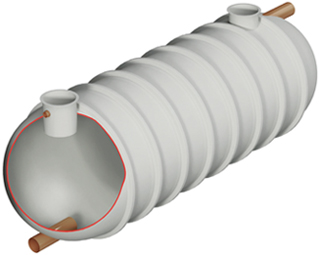Once your tankered liquid waste has been removed from your property, the responsibility of safely transporting and disposing of the waste becomes the responsibility of your waste collection agency. However, knowing that your waste has been disposed of hygienically and safely can help set your mind at ease that your waste isn’t harming the environment. With this in mind, in this month’s article we’re taking a look at what happens to tankered liquid waste after collection.
Waste collection
The first step in waste disposal is waste collection. This is the part of the process that most tank owners know the details of. A team of sewage engineers visits the property and empties the tank of waste through vacuum trucks or hand-operated pumps.
If the tank contains commercial waste that can be hazardous to the environment, steps may be taken to ensure that the waste can be effectively treated at the sewage team’s facilities. This process can involve paperwork requiring information on the production of the waste, the nature of the company’s business and what elements the waste might contain. Following this, a sample of the waste is treated and examined. Examples of commercial waste that these safeguarding steps may be required includes:
- Pharmaceutical and cosmetic waste
- Chemical waste
- Food waste
- Contaminated water
- Landfill leachate
Contact your waste collection company to discuss the nature of your waste prior to first collection.
Treating liquid waste
The collected waste is transferred to the waste treatment premises. Here commercial wastewater is treated to remove any harmful or hazardous elements through a series of blending and oil separation treatments to ensure that waste can be safely reused.
Clean domestic waste – such as water waste that has been treated through a septic tank – can be immediately reused by spreading the sludge on fields or soil to act as a fermentor, while untreated sludge, storm water or water waste will be rigorously cleaned through the use of ph levels, ammonia and natural pathogens before it is reused.
Treating liquid waste has three main stages: preliminary, primary and secondary treatments.
During preliminary treatment, large items such as wood, metal, rags, paper or plastic are removed from the waste, as well as any small stones or grit that may damage the waste treatment system.
During primary treatment, the wastewater is put through a sedimentation tank which causes settlement, separating any fine solids from the water for easy removal.
Finally, secondary treatment deals with the biological treatment of the water. Organic matter in the waste is biodegraded using micro-organisms. This process usually creates a second sedimentation stage, so the solids created here are removed, leaving a clear effluent that is free of pathogens and safe for disposal or reuse.
Disposing of liquid waste
Once the wastewater has been deemed clean enough to reuse, it is often disposed of either in rivers or oceans. Alternatively, it is used on fields and soils to water crops and plants for sustainable landscape irrigation. Other uses of recycled wastewater include to meet commercial water needs, to flush toilets, and sometimes even for drinking.
For a high quality and reliable tankered waste disposal service, look no further than Wildon UK. With over 20 years’ industry experience working with domestic, commercial, industrial and agricultural sewage and drainage, there’s no problem too big or too small for our team of engineers. We guarantee an efficient and professional manner and a timely response, no matter what service you require. Get in contact today to find out more.









